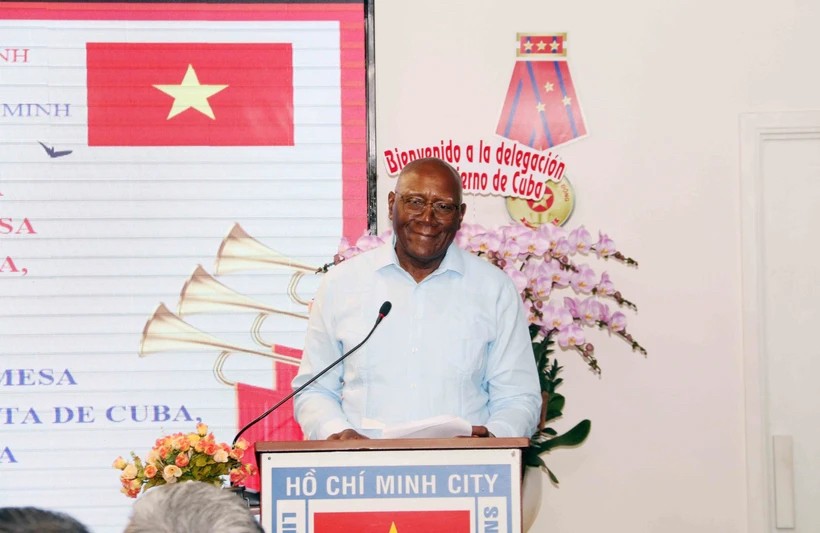Michelin Recommends Five Must-Try Vietnamese Dishes
According to the website, Banh Cuon, Vietnamese steamed rice rolls, are prepared upon request, allowing diners to witness the chef steam the rice sheets and craft the rolls before their very eyes.
Michelin shared that there are two varieties of the dish available, with the more common type being filled with minced pork and black fungus, whilst the egg version features a soft poached egg.
Diners have the option to add pork meatloaf and sausage, accompanied by a selection of fresh herbs, chilli, lime, or garlic slices to season the fish sauce dip.
Banh Cuon
Banh cuon, Vietnamese steamed rice rolls, are prepared upon request, allowing diners to witness the lady at the entrance steam the rice sheets and craft the rolls before their eyes. There are two varieties of banh cuon available: the more common type filled with minced pork and black fungus, and another version, the egg banh cuon, featuring a soft poached egg. Diners have the option to add pork meatloaf and sausage, accompanied by a selection of fresh herbs, chilli, lime, or garlic slices to season the fish sauce dip.
Once serving customers, sellers split each roll carefully to avoid tearing them apart.
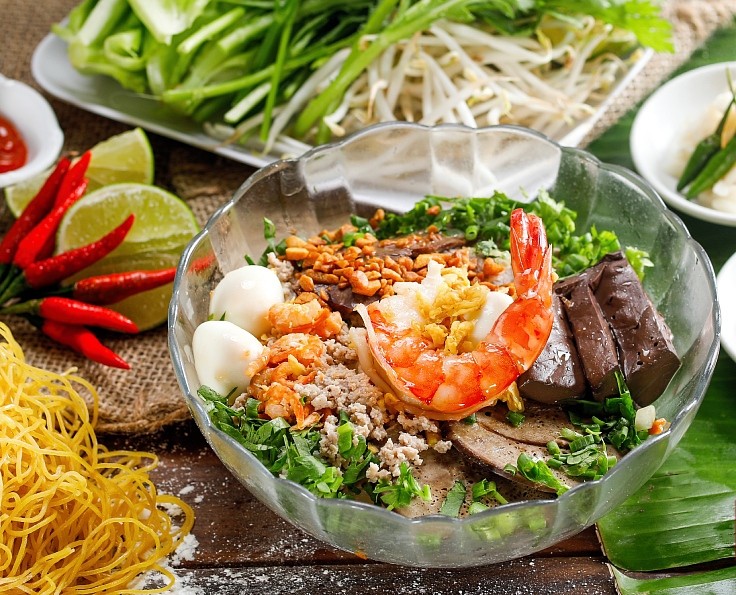 |
| Care for some Phnom Penh-style rice noodles? Photo: © Hong Phat Quan 3 |
After putting sufficient proportion on a plate, they are cut in half by a sharp pair of scissors. Next, each half of the pancake is put onto each other so people can see each paper-thin layer.
Banh Cuon reflects not only gastronomic but also Vietnamese cultural values. The most important ingredient of the pancake is rice and the dipped sauce is fish sauce which is typical for our agricultural country.
Hu Tieu
In Saigon, it highlights hu tieu (Phnom Penh-style rice noodles), a well-liked dish that reflects the historical culinary fusion in Vietnam. This blend combines the culinary traditions of Chaozhou and Khmer and was introduced to the southern part of Vietnam by Cambodian repatriates in the 1970s.
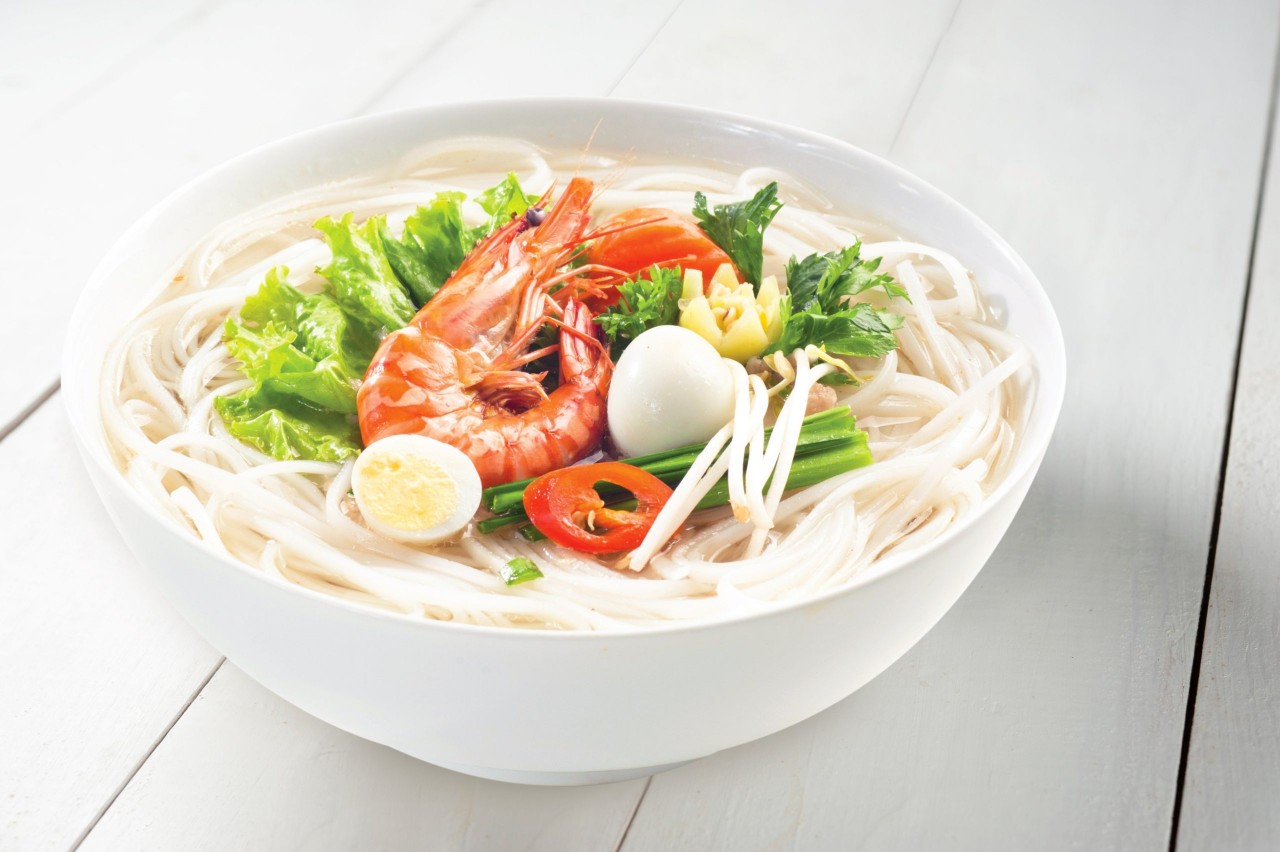 |
| The name hu tieu originated from the Teochew (or Chaozhou) language, also written as hu tiu in some Vietnamese regional dialects. Photo: Sa Giang |
The name hu tieu originated from the Teochew (or Chaozhou) language, also written as hu tiu in some Vietnamese regional dialects. Although it is commonly thought that hu tiu was created by Khmer and Cambodian people, this noodle soup was introduced by Chinese people living in Phnom Penh, Cambodia. The original noodles used in Chinese cuisine, called “hu tieu mem,” resemble Vietnamese pho noodles: they are soft, flat, slippery, and slightly chewy.
However, people in Southern Vietnam did not appreciate this type of noodle because it gave the dish a similar quality to pho, thereby reducing the unique essence of hu tieu. To address this, they utilized the abundance of rice in the Mekong Delta and created their version of noodles, known as “hu tieu dai” (chewy noodles), which are chewier, more transparent, and made from rice starch. These noodles are also smaller in size compared to pho or Chinese soft noodles.
Bun Cha
The bun cha eatery situated in the Old Quarter is highly favoured by tourists. Their straightforward menu presents various bun cha (rice noodles with grilled pork) combinations paired with different nem ran (fried spring rolls), each offering a distinct flavour. The grilled pork, with its charred goodness, is irresistible when enjoyed alongside the sweet and sour soup and, naturally, accompanied by a selection of fragrant herbs.
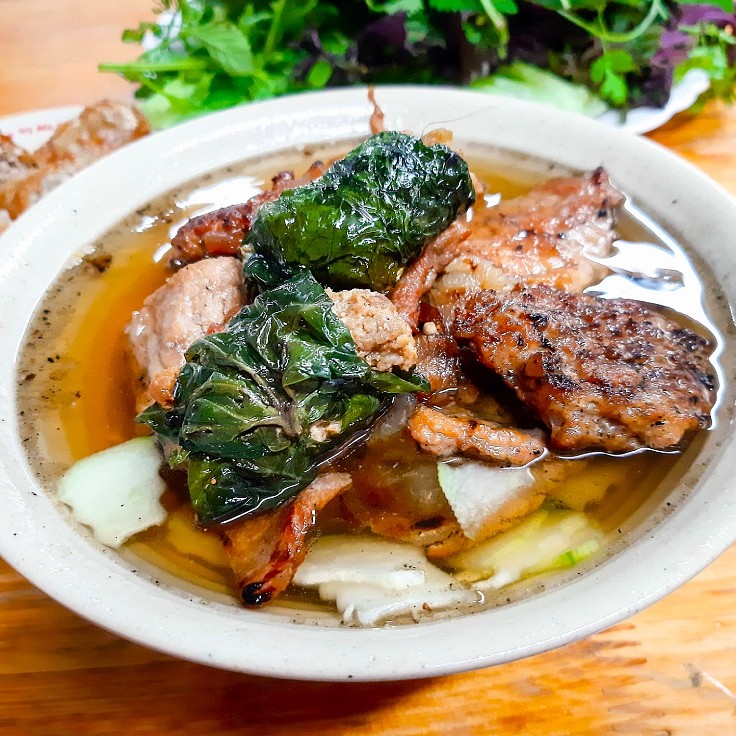 |
| Bun Cha Dac Kim's bun cha in Hanoi. Photo: © MICHELIN |
To eat this dish authentically, serve the meat and broth in one bowl, and the rice noodles on a plate next to it. Place separate bowls with the chopped garlic, sliced chilli, fresh herbs and salad leaves around it.
Each person first seasons their broth to taste with garlic and chilli. Then, fill a small bowl with lettuce, herbs and some noodles and spoon some meat and some tasty liquid over it. If necessary, adjust the flavours by adding extra garlic, fresh chilli or chilli sauce. Stir gently and taste.
Xoi
A Vietnamese snack known as "xoi," Vietnamese sticky rice, is commonly enjoyed as a compact breakfast or lunch by locals. This establishment is operated by a youthful team, providing a dining area that's cosy and relaxing. It's an excellent spot for breakfast and a light lunch.
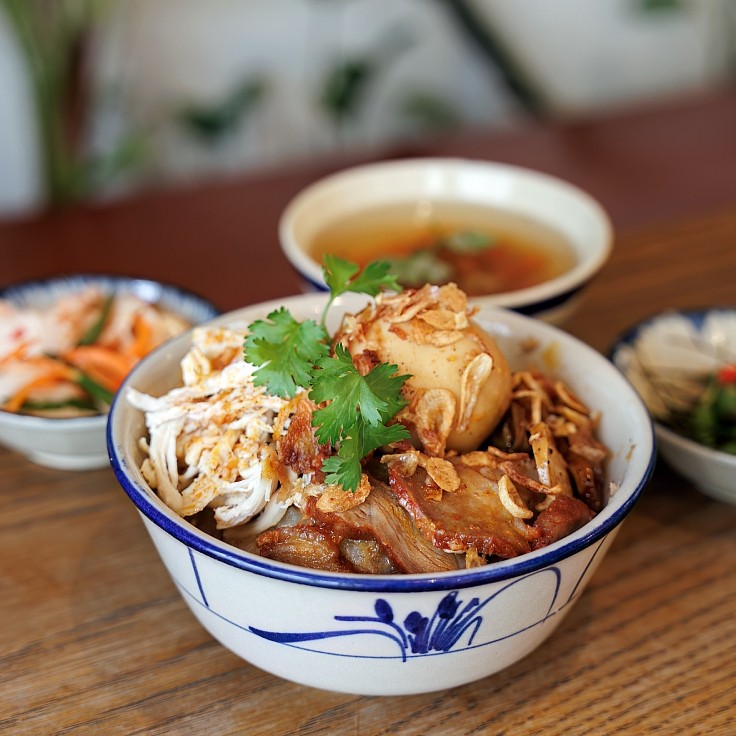 |
| Enjoy a variety of toppings on sticky rice at Xôi Bát in Ho Chi Minh City. Photo: © Mervin Lee/ MICHELIN Guide Vietnam |
There are any number of speciality Xoi restaurants, as well as push carts that stand on street corners or bicycles that go around the streets well past midnight, long after restaurants and other eateries have closed.
Xoi, as the name suggests, is made with glutinous rice, steamed or cooked. Some love having this regularly for breakfast and those who have it at any time of the day or night, but almost every Vietnamese will have it at least once a month.
Pho
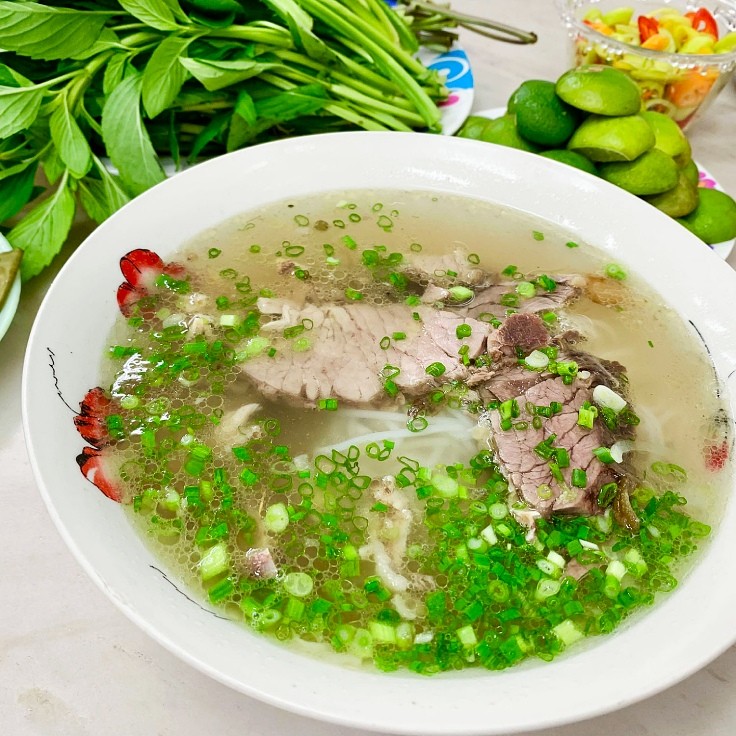 |
| Fancy a hot bowl of pho at Pho Hoa Pasteur? (© MICHELIN) |
Departing Vietnam without savouring several bowls of pho is inconceivable. Both “pho bo” and “pho ga” are not just globally celebrated but also serve as a hearty daily essential for locals. Remember to add a handful of herbs or a squeeze of lime to the piping-hot soup.
 | Enjoy The Cloud-Hunting Season In Fansipan During this December month, many travelers flock to Fansipan summit to experience the best cloud-hunting season of the year. |
 | Google Doodle Honors World Natural Heritage Of Ha Long Bay The Vietnamese homepage of tech giant Google on December 17 featured a doodle of Ha Long Bay to mark the 29th anniversary of the United ... |
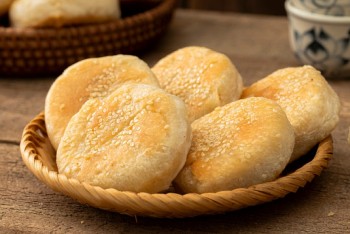 | The Must-Try Traditional Foods In Sapa Sapa is not only famous for its enchanting nature but is also for the delicious traditional dishes that will satisfy food lovers. |
Recommended
 Handbook
Handbook
Vietnam Moves Up 8 Places In World Happiness Index
 Handbook
Handbook
Travelling Vietnam Through French Artist's Children Book
 Multimedia
Multimedia
Vietnamese Turmeric Fish among Best Asian Dishes: TasteAtlas
 Handbook
Handbook
From Lost to Found: German Tourist Thanks Vietnamese Police for Returning His Bag
Popular article
 Handbook
Handbook
Prediction and Resolution for the Disasters of Humanity
 Handbook
Handbook
16 French Films To Be Shown For Free During Tet Holiday In Vietnam
 Handbook
Handbook
Unique Cultural and Religious Activities to Welcome Year of the Snake
 Handbook
Handbook






